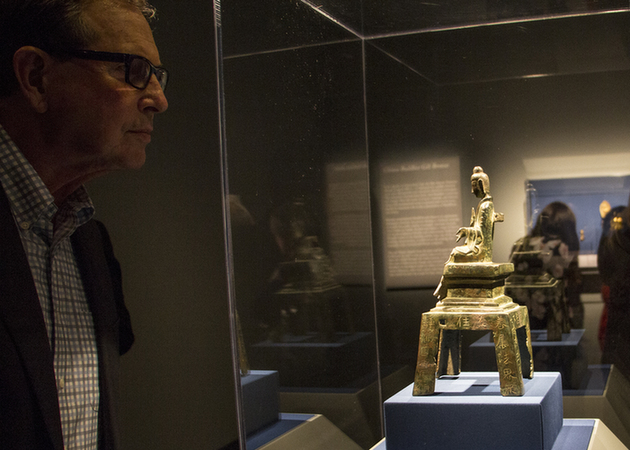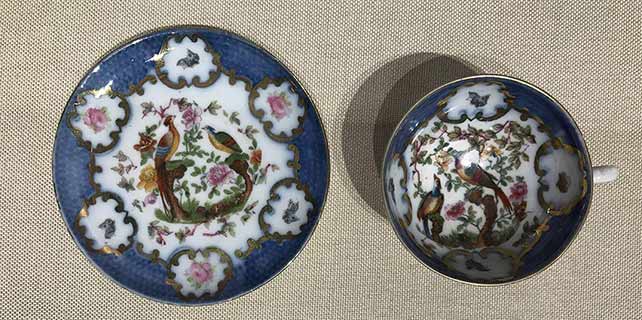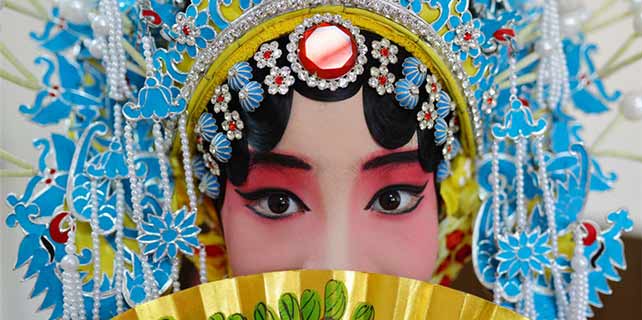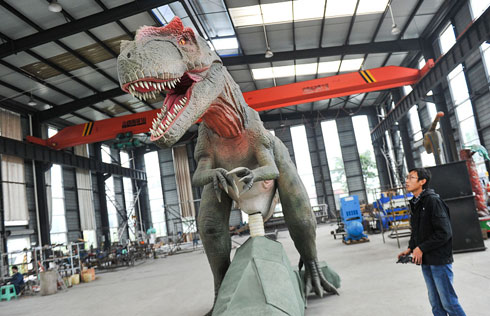Bronze Buddhas grace MFAH
 |
|
A viewer admires a Shykyamuni Buddha gilt bronze from Western Wei period dated AD 539 at the Museum of Fine Arts Houston on Wednesday. This is the latest addition to Jane and Leopold Swergold's Chinese Buddhist gilt bronze collection which is on display at MFAH until June 2018. MAY ZHOU / CHINA DAILY |
A private collection of Chinese religious sculptures is lighting up the Museum of Fine Arts Houston (MFAH) this holiday season.
More than 20 pieces of Chinese Buddhist gilt bronzes from the Jane and Leopold Swergold Collection have just been mounted in the museum's Arts of Asia gallery. The pieces come from the North Qi, Wei, Sui and Tang dynasties, spanning a little over 500 years up to 907 AD.
Collector Leopold Swergold joined art experts to discuss his collection on Wednesday night with a group of art lovers and collectors.
The display is a culmination of 30 years of collecting in this particular field by the couple. Swergold had worked in the financial world for his entire career and his wife majored in art history and later studied Asian art. Retried now, the couple splits their time between Florida and Connecticut.
"Our first Chinese piece was a fat lady from the Tang (618-907). I bought that as a gift for my wife. That started it," said Swergold.
Their collection began with stone and ceramic sculptures and mingqi (burial objects). For a while, they also collected paintings. Later they felt that they didn't understand what they were collecting and sold their paintings at auction.
In the course of 30 years, the Swergolds collected more than 130 pieces of Chinese art. "I only collect Chinese. I have an emotional attachment to it, I don't know why," Swergold said.
As the couple's interest later shifted to Buddhist gilt bronzes, they accumulated an impressive collection of more than 20 pieces, which are now on display at MFAH until June 2018.
Swergold shared with the audience how he started to collect Buddhist sculptures.
"When I discovered the first Buddhist gilt bronze piece, for me it was an eye-opener. I stood in front of it for what I thought was an hour but really only a few minutes. I felt I couldn't move. It kind of grabbed me, it still does.
"It's serene, it has a certain amount of connectivity to the viewer, and most people would stand in front of it for a long time," Swergold said describing the Amitabha Buddha from the Sui Dynasty (581-618).
Swergold said that in collecting these pieces, it's important to him that the condition is pretty good with completeness and other attributes. "You never get perfect. One piece is missing two fingers. After all they are 1,500 years old," he explained.
The most recent addition is a Shykyamuni Buddha gilt bronze from the Western Wei period he found in London.
"This is quite a significant piece because it's a perfect depiction of the attributes of that time. If you look from front, it's a triangle, which is basic to the Eastern way. The robe is cascading, and the face is long, also basic to Eastern Way. If you want to teach somebody what the Eastern way looks like, this would be an example," Swergold said.
Swergold's passion for Chinese Buddhist gilt bronzes led him to publish a book titled Thoughts on Chinese Gilt Bronzes in 2014. In it he traces the evolution of the art form superimposed on the history, culture and religions of China from the 5th to the 10th centuries.
MFAH curator Bradley Bailey said that as a pan-Asia artist, he found the classic Chinese Buddha aesthetic from the collection immensely influential.
"You will find that pieces from the 6th to as late as the 14th century in our gallery have these very same iconic graphic characteristics, from Buddha's top knot to the drapery and the symmetry," Bailey said.
MFAH curatorial assistant Beatrice Chan said the exhibition served a special purpose. "We really felt that the story of Buddhism was not represented in the Chinese art gallery. Japanese, Indian and Korean arts all have some Buddhist figures, but there is no dedicated Chinese show about Buddhism. We thought this would be a very good introduction to the subject."
mayzhou@chinadailyusa.com


















